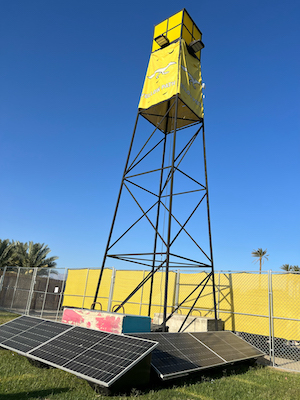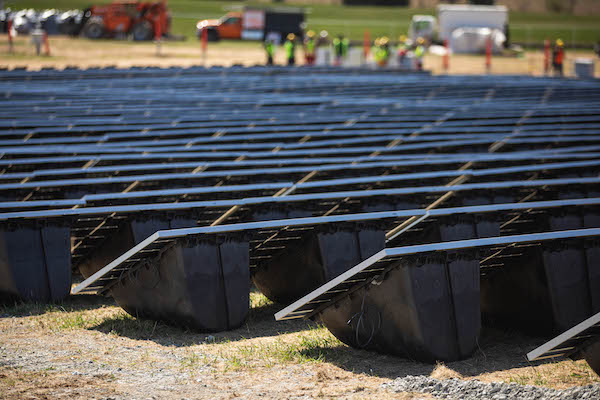Mobilizing to Win
The United States is slow to anger, but relentlessly seeks victory once it enters a struggle, throwing all its resources into the conflict. “When we go to war, we should have a purpose that our people understand and support,” as former Secretary of State Colin Powell put it, “We should mobilize the country's resources to fulfill that mission and then go in to win.”
 While the language and tone in the debate about climate change is too often likened to a “war” and “combating” the challenge, the reality is that changing climates around the world present a real risk that needs to be addressed with seriousness and practical solutions as we innovate towards the future. We know from experience that American leadership on stewardship and innovation will make the world a healthier and more prosperous place – free economies are clean economies by twice as much. What we need is not a “war” on carbon, or even to “combat” climate change, but rather to accelerate innovation across all solutions with cleaner gas, captured, stored, and recycled carbon, advanced nuclear energy, geothermal, hydro, wind and yes, solar.
While the language and tone in the debate about climate change is too often likened to a “war” and “combating” the challenge, the reality is that changing climates around the world present a real risk that needs to be addressed with seriousness and practical solutions as we innovate towards the future. We know from experience that American leadership on stewardship and innovation will make the world a healthier and more prosperous place – free economies are clean economies by twice as much. What we need is not a “war” on carbon, or even to “combat” climate change, but rather to accelerate innovation across all solutions with cleaner gas, captured, stored, and recycled carbon, advanced nuclear energy, geothermal, hydro, wind and yes, solar.
The sun is the source of virtually all of the energy on Earth. Even the energy released when we burn fossil fuels such as oil and natural gas is energy that originally came from the sun, during Earth’s Mesozoic Era.
Where there are deserts or other sparsely populated places with plenty of direct sunlight, we should be placing solar arrays. The same holds true for turbines. Where there are few people but plenty of wind (such as north Texas or the Oklahoma panhandle) there should be windmills. We should then run DC wires to deliver the electricity efficiently to as many cities as possible.
We live in an amazing era of innovation and creativity. Renewable energy is making incredible strides in cost reduction and deployment, especially in recent years. Yet, wind and solar only make up a relatively small percentage of American electricity generation, providing 12 percent of the nation’s power generation in 2021 (wind at 9.2 percent, and solar at 2.8 percent). There is plenty of room to grow; we need to push those numbers up as quickly as possible.
One way is to deploy flexible solar arrays, which can be scaled up as necessary and moved if needed. These portable solar panels can be installed almost anywhere. Plus, some of the latest solar installations can be made with recycled material and are fully recyclable — after they have served their useful lives, they can be repurposed, rather than being tossed into a landfill.

Another way to accelerate the deployment of more solar energy would be to remove all government subsidies for mature energy technologies. This includes the ITC for solar. As the CEO of a solar company, I know it’s not a popular position, but I’ve seen firsthand how tax credits add time, complexity, legal cost, and even project costs when developers (and those with tax “appetite”) are more focused on tax credits than being cost competitive. What we need is a level playing field, without the government picking winners. This is a massive market, with ample investment opportunities and significant market demand. We don’t need government subsidies for technologies that are already mature and in the market.
The Business Council for Sustainable Energy reports that: “[t]he injection of $105 billion in new private capital in the U.S. energy transition in 2021 is an 11 percent year-on-year increase, and a 70 percent increase over the past five years. The 2021 total included $47 billion in renewable energy (45 percent), $35 billion in electrified transport (34 percent) and a doubling of hydrogen investments to $200 million in 2021.” Globally, the total investment in these energy sources and technologies was $755 billion in 2021.
Meanwhile, the U.S. needs to continue to lead the world in the development of battery technology. We also need to build redundancy into the system as much as possible; if one source of energy isn’t available, we need to be able to move smoothly, without interruption, to another source.
All-of-the-above also includes nuclear energy, of course. Nuclear runs practically non-stop, providing an abundance of carbon-free energy. The latest Small Modular Reactors are safer and easier to build than traditional nuclear power plants.
It’s time for the world to have an intellectually honest and evidence-based discussion about climate change and how to best address it. We don’t need a war on climate change. What we need is to accelerate energy innovation to be increasingly clean, efficient, reliable, and affordable. Let’s find solutions that can adapt to challenging and changing climates wherever they present themselves. In the end, it’s those solutions that will help lift people out poverty, and provide for a safer, more peaceful, and prosperous world.
Drew Bond is co-founder, President & CEO of Powerfield Energy, which is on a mission to make solar energy easy and abundantly affordable for the whole world.
Powerfield Energy | www.powerfieldenergy.com
Author: Drew Bond
Volume: 2023 May/June








